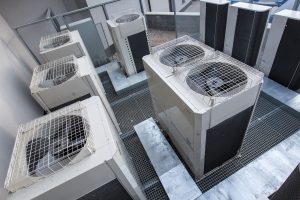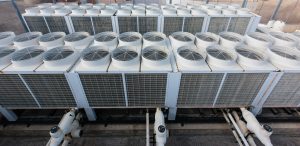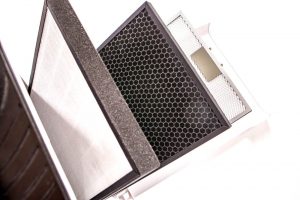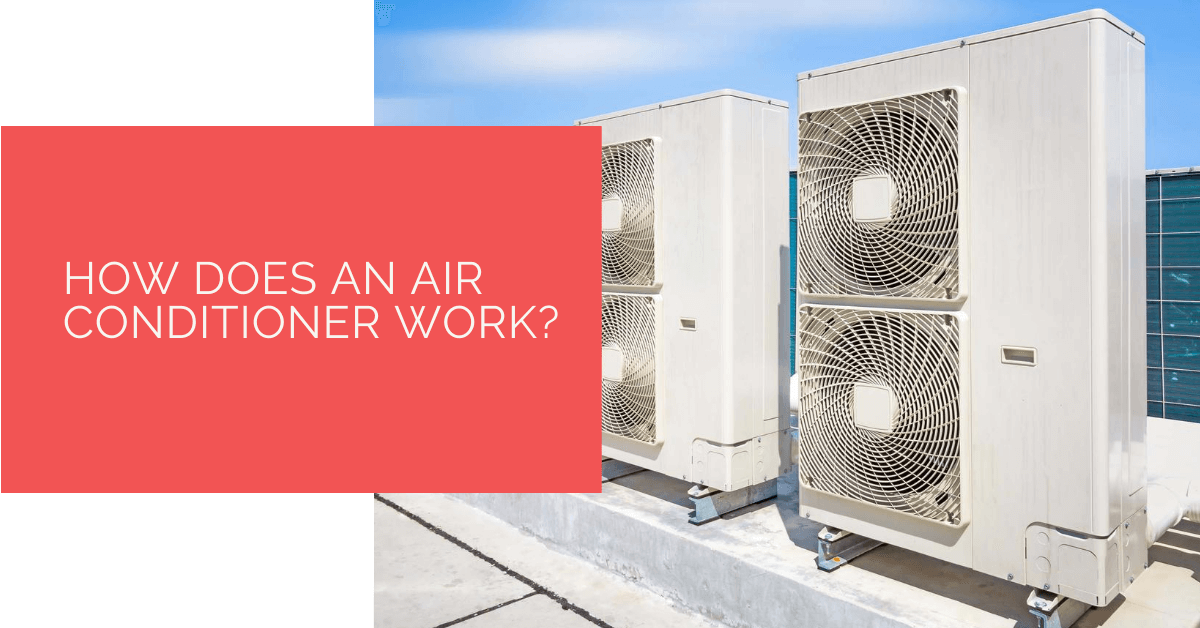Come summertime, air conditioners become indispensable for our comfort and, in some cases, our survival as well. This is even though humans have evolved to have an efficient internal cooling system in the form of sweating. By sweating, we can lower their core temperature through evaporative cooling that occurs on the skin. The process of sweating releases some of the body’s heat.
However, in the confines and comfort of our homes, sweating might not be the most appropriate form of cooling. Not only will your clothes drench in sweat, but you will also have to endure sticky, salt-laden skin. There is also the issue of excess heat exposure, such as during heat waves, which our in-built cooling mechanism cannot handle. In a nutshell, we need AC.
So, what makes ACs so special? What is their working principle of these appliances that helps keeps a sizeable indoor space so comfortable? Read on to learn about the facilitating system that is the air conditioner.
We have also compiled a list of the the best portable air conditioners to compare the best available.
Contents
Key Takeaways
- Air conditioners work by using refrigerants to absorb indoor heat and release it outside through a cycle involving key components: refrigerant, evaporator, compressor, condenser, and expansion valve.
- Although not part of the AC system, air filters play a crucial role in maintaining indoor air quality and system efficiency by preventing dust and particles from clogging the evaporator coil.
- Different types of air filters are available, with higher MERV ratings offering better filtration of air impurities, including viruses and allergens.
How an Air Conditioner Works
Here are the mechanical components of an air conditioning system and the role they play.
Refrigerant
 The refrigerant is the ‘blood’ of the system, and it plays a significant part in the cooling process. Refrigerants are chemicals that can transform from liquid to gaseous forms fast and with ease, in a process called phase transition.
The refrigerant is the ‘blood’ of the system, and it plays a significant part in the cooling process. Refrigerants are chemicals that can transform from liquid to gaseous forms fast and with ease, in a process called phase transition.
For decades, the AC industry has R-22 as the primary refrigerant. However, due to concerns over the adverse effects of R-22 on the environment, the industry has started to use R-410A (a different hydrochlorofluorocarbon chemical) and other safer alternatives.
Within the closed system of the AC, the refrigerant absorbs indoor heat while in its liquid state, causing the chemical to evaporate into a gaseous form. The gaseous form of the compound is forced to the outdoor components of the AC system.
To release the heat and to increase the efficiency of the AC, the gaseous refrigerant is forced to convert into liquid form. The liquid refrigerant is later on pumped indoors, where the cycle repeats.
Evaporator
The evaporator is the part of the AC system installed indoors. It gets the name “evaporator” because it is part of the system where the refrigerant evaporates.
Warm air is drawn in through the intake vents and directed to the evaporator coil. As warm air passes the evaporator coil, the heat is transferred to the colder refrigerant.
As mentioned above, the warm air causes the refrigerant to evaporate into a gaseous form that is force outdoor via the AC duct lines.
After the heat is drawn from the indoor air, the cold air distributed indoors via AC ductwork.
Compressor
After absorbing the indoor heat, the refrigerant gas is forced into the compressor, which is located outdoors.
 At the compressor stage, the gas is forced into a narrow-spaced solid object that reduces the volume of the gas. Consequently, the squeezing process increases the temperature and the pressure of the gas in preparation for the next step in the cycle – the condensing process.
At the compressor stage, the gas is forced into a narrow-spaced solid object that reduces the volume of the gas. Consequently, the squeezing process increases the temperature and the pressure of the gas in preparation for the next step in the cycle – the condensing process.
Condenser
The next stage of the cycle is the condenser stage. The condenser is always installed outdoors and exposed to outdoor air.
The refrigerant gas is forced to flow through fins that absorb the heat and radiate the heat into the air. This ‘heat-sink’ feature allows the system to dissipate the heat in a fast and efficient manner. As the refrigerant loses temperature, it phases back to liquid form.
Expansion Valve
Also referred to as the throttling device, the expansion valve is located right after the condenser stage. After dissipating the heat and turning back to liquid, the refrigerant is forced into the exemption valve, where the pressure and the pressure decrease rapidly.
This process further drops the temperature of the chemical, giving it maximum heat absorption properties.
With the refrigerant chilled, it is ready to absorb more heat from indoor spaces. As such, it is circulated indoors, where it absorbs more heat and repeats this process.
That’s how all the AC components are interconnected and how they function. With the aid of the refrigerant, air conditioners absorb hot indoor air, process the air using the compressors, condenser, and expansion valve. With the heat absorbed at the beginning of the stage, the air distributed by the vents is cold and conditioned.
About Air Conditioning Filters
Although not a built-in part of an AC system, the air filters are nonetheless crucial in providing high-quality indoor air quality and increasing the efficiency of the HVAC system.
 Manufacturers design the filter to prevent a wide variety of particle sizes from gaining access to the evaporation coil. The evaporation coil is made of compactly spaced fins attached directly to the refrigerant lines. The snag spacing leaves the coil susceptible to clogging due to the accumulation of dust particles in between the spaces.
Manufacturers design the filter to prevent a wide variety of particle sizes from gaining access to the evaporation coil. The evaporation coil is made of compactly spaced fins attached directly to the refrigerant lines. The snag spacing leaves the coil susceptible to clogging due to the accumulation of dust particles in between the spaces.
By filtering the air before it is passed through the evaporative coil, the filter protects the HVAC system and ensures it runs efficiently. Importantly, by filtering the dust particles in the air, the filter also improves the quality of indoor air.
There are several AC filters on the market, including:
- carbon and adhesive filters,
- electrostatic air filters, and
- the plastic mesh filter.
Depending on the filter and its rating, you can filter out particles as small as fumes, oil smoke, and viruses to large particles such as mist, dust, mould spores, ashes, and pollen.
If you want your AC to trap as much air impurities as possible, invest in a filter with a higher rating, around 12 MERV.
Heat Pump Source: Reliable Heating and Cooling Solutions
At Heat Pump Source, we take pride in our unwavering commitment to serving the UK with top-tier HVAC solutions. From the efficiency of heat pumps and the cool relief of air conditioning to the warmth of boilers, radiators, and underfloor heating, our dedicated team is always at the forefront of innovation. We understand the unique needs of every household and business, and we strive to provide dependable health and cooling products and services that are tailored just for you. Ensuring your comfort and satisfaction is our utmost priority. Whether you have questions, need guidance, or require support, we’re always here to assist. Please don’t hesitate to contact us; we’re eager to be of service.
Conclusion
Understanding how air conditioners work is essential for appreciating their role in maintaining indoor comfort during the hot summer. As outlined in this article, the intricate dance of refrigerants and mechanical components showcases the remarkable engineering behind these systems. Additionally, air filters’ importance in enhancing system performance and indoor air quality cannot be overstated. As we continue to rely on air conditioning for comfort, knowing how it operates and the significance of regular maintenance, including filter selection, helps ensure that our spaces remain cool, comfortable, and healthy.
About the Author
At Heat Pump Source, our articles are the product of a collaborative effort among a team of highly skilled HVAC experts. Our dedicated professionals, hailing from diverse backgrounds in heating, ventilation, air conditioning, and refrigeration, contribute their extensive knowledge and experience to every piece of content. This multidisciplinary approach ensures comprehensive coverage. Our commitment is to deliver authoritative, reliable, and tailored advice to meet the unique needs of every household and business across the UK.

